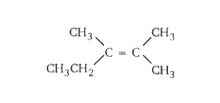The given diagram is highly diagrammatic representation of mammalian heart. In this diagram
(##EVR_ANM_ICSE_BIO_X_C07_E01_020_Q01.png" width="80%">
What do the arrows indicate ?
To understand what the arrows in the diagram of the mammalian heart indicate, we can break down the blood circulation process step by step:
1. Identify the Components of the Heart:
- The mammalian heart consists of four main chambers: the right atrium (or auricle), right ventricle, left atrium (or auricle), and left ventricle.
2. Deoxygenated Blood Flow:
- The arrows likely indicate the flow of deoxygenated blood. This blood returns to the heart from the body via the superior vena cava and enters the right atrium.
3. Movement to the Right Ventricle:
- From the right atrium, the deoxygenated blood moves through the tricuspid valve into the right ventricle.
4. Pulmonary Circulation:
- The right ventricle pumps the deoxygenated blood through the pulmonary valve into the pulmonary artery, which carries it to the lungs.
5. Oxygenation in the Lungs:
- In the lungs, the deoxygenated blood releases carbon dioxide and picks up oxygen, becoming oxygenated.
6. Return to the Heart:
- The oxygenated blood returns to the heart through the pulmonary veins into the left atrium.
7. Movement to the Left Ventricle:
- The oxygenated blood then flows from the left atrium through the mitral (or bicuspid) valve into the left ventricle.
8. Systemic Circulation:
- Finally, the left ventricle pumps the oxygenated blood through the aortic valve into the aorta, distributing it to the rest of the body.
Conclusion:
The arrows in the diagram represent the direction of blood flow through the heart, indicating both the deoxygenated blood returning to the heart and the oxygenated blood being pumped out to the body.
---
- The mammalian heart consists of four main chambers: the right atrium (or auricle), right ventricle, left atrium (or auricle), and left ventricle.
- The arrows likely indicate the flow of deoxygenated blood. This blood returns to the heart from the body via the superior vena cava and enters the right atrium.
- From the right atrium, the deoxygenated blood moves through the tricuspid valve into the right ventricle.
- The right ventricle pumps the deoxygenated blood through the pulmonary valve into the pulmonary artery, which carries it to the lungs.
- In the lungs, the deoxygenated blood releases carbon dioxide and picks up oxygen, becoming oxygenated.
- The oxygenated blood returns to the heart through the pulmonary veins into the left atrium.
- The oxygenated blood then flows from the left atrium through the mitral (or bicuspid) valve into the left ventricle.
- Finally, the left ventricle pumps the oxygenated blood through the aortic valve into the aorta, distributing it to the rest of the body.
The arrows in the diagram represent the direction of blood flow through the heart, indicating both the deoxygenated blood returning to the heart and the oxygenated blood being pumped out to the body.
Topper's Solved these Questions
Similar Questions
The given diagram is highly diagrammatic representation of mammalian heart. In this diagram
(##EVR_ANM_ICSE_BIO_X_C07_E01_022_Q01.png" width="80%">
From where do the parts numbered 1- 6 receive blood ?
View SolutionThe given diagram is highly diagrammatic representation of mammalian heart. In this diagram
(##EVR_ANM_ICSE_BIO_X_C07_E01_021_Q01.png" width="80%">
Name the valves that guard openings in the heart.
View Solution
Knowledge Check
The given image represents:
(##OSW_GRU_MCQ_ISC_XII_SM1_BIO_C05_E01_070_Q01.png" width="80%">Achromosomes assorting independently.Bsegregation of incompletely linked genes.Ccrossing over between factors carried on the chromosomes.DBoth (a) and (c)Match the items of column A to those given in column B.
(##OSW_GRU_MCQ_ISC_XII_SM1_CHE_C01_E01_039_Q01.png" width="80%">A1-(q), 2-(p), 3-(t), 4-(r), 5-(s), 6-(v), 7-(u)B1-(p), 2-(q), 3-(s), 4-(r), 5-(t), 6-(u), 7-(v)C1-(v), 2-(s), 3-(u), 4-(p), 5-(r), 6-(q), 7-(t)D1-(r), 2-(u), 3-(t), 4-(q), 5-(v), 6-(s), 7-(p)What,is the major product ofthe following reaction?
(##BLJ_MSC_OBJ_CHE_JEE_C05B_E01_057_Q01.png" width="80%">A B
B C
C D
D
The given diagram is highly diagrammatic representation of mammalian heart. In this diagram
Name the parts marked 1-12.

View SolutionOut of CH3OH and phenol (##SB_CHM_XII_OD_I_2016_E01_004_Q01.png" width="80%">, which one is more acidic ?
View SolutionFind the equivalent resistance between P and Q.
(##ARH_NEET_PHY_OBJ_V02_C03_S01_032_Q01.png" width="80%">
View SolutionMatch the properties and uses of alloys in List 1 with the appropriate answer from List 2.
(##EVRBLKICSECHEX_C07E06054_Q01.png width=80%>
View SolutionIn the given figure. AB is the diameter of the circle with centre O.
(##SELRKBICSEMATX_C17E04012_Q01.png width=80%><br>If angle ADC = 32 ^(@) , find angle BOC.
View Solution
